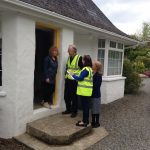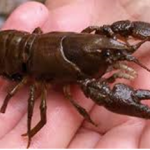]The National Federation of Group Water Scheme who are the…
Lough Corrib Angling Federation launch their new website
Lough Corrib is the biggest lake in the Irish Republic and is second in size only to Lough Neagh in the whole of Ireland. It is located largely in County Galway with a corner in Mayo, and it is part of a larger catchment that also encompasses Lough Carra and Lough Mask .
Lough Corrib is world famous as a wild brown trout fishery. There are thirteen angling clubs around the lake and they join together in the Lough Corrib Angling Federation. The Federation has a strong interest in environmental matters and that is reflected in its activities.

Cairde Loch Coiribe – working on stream habitat enhancement
One subgroup of the Federation is Cairde Loch Coiribe. Club members contribute €15 of their annual membership towards Cairde, and non-members can also support this development fund through a €15 purchase. This money is spent on stream habitat enhancement and each euro spent is matched by a private benefactor, the Clydagh Foundation. The Federation also runs an annual competition , The Federation Cup, on a catch and release basis with all funds going to Cairde Loch Coiribe.
Working together on protecting water, raising trout, youth development, and more…
Another long-standing group associated with the Federation, and the sister Federations in Mayo, is the Carra Mask Corrib Water Protection Group. This group has engaged in for many years in lobbying at National and at EU level on issues relating to water quality.
The Federation provides funding for the trout hatchery at Oughterard. Every year, under licence from Inland Fisheries Ireland trout ova are fertilised here and brought to viable status over the winter before release in the Corrib catchment in the spring.
The Federation has engaged in youth development events, in safety awareness events and in canal clean-ups in Galway city. It is concerned with predator control and with the control of invasive species. It will shortly run small stream characterisation sampling (“kick-sampling”) courses and supports clubs in an Adopt a River scheme to follow up on this training by keeping track of water quality indicators in the streams flowing into the lake.
And the members do some fishing too!
New website launched
The Federation website was launched on 14 March in the Commercial Boat Club, overlooking a wide sweep of the Corrib river as it flows to the salmon weir. As well as fishing club members there was a welcome for local representatives Noel Grealish TD, Cllr. Terry O’Flaherty and Cllr Frank Fahy, Catherine Seale of the Waters and Communities Office, Philip James of the Galway Waterways Initiative, and several staff from Inland Fisheries Ireland headed by John Connolly.
The website provides information on the Federation and provides contact information for all local clubs. There is all the information you will need to make contact with clubs on the Corrib. And it is worth visiting to see a wonderful gallery of photographs by local angler Conor Ledwith.
If you didn’t want to visit Corrib before now, wait until you see the pictures!
Website: http://loughcorribanglingfederation.ie
Article by Denis Healy (Chairman of the Lough Corrib Angling Federation)







